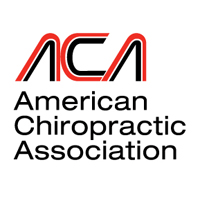Sciatica & Sciatic Nerve Pain Treatments
- By susant3t
- •
- 18 Mar, 2015
- •
What is Sciatica? A sensation that runs down the leg may be coming from a condition called sciatica. The pain, burning, numbness, or tingling is due to inflammation or irritation to the Greater Sciatic Nerve, the largest nerve that exits our spine. The part of this nerve that causes problems down the back of the […]
A sensation that runs down the leg may be coming from a condition called sciatica.
The pain, burning, numbness, or tingling is due to inflammation or irritation to the Greater Sciatic Nerve, the largest nerve that exits our spine.
The part of this nerve that causes problems down the back of the leg or into the gluteal area exits the spine at the level of the fifth lumbar vertebra. This is the last of the five lumbar vertebrae and is the area of the spine that carries the most weight, and stress. The discomfort of sciatic neuritis (sciatica) can range from a mild irritation to an inability to function.
Sciatica is a common condition and is experienced by many.
Although it is less common than lower back pain, many sciatic conditions actually come from a problem in the lower back.
The irritation that begins in or near the spine is actually referred down the nerve, so the symptoms are felt in the buttock, leg, and even into the foot. Your doctor can test you for the sciatica by performing certain stress motions on the lower spine, which will demonstrate increased symptoms in the affected leg.
The Sciatic nerve can be pinched either at the level of the spine or where the nerve passes near or through a muscle in the buttock called the piriformis muscle. Compression at either of these levels can cause symptoms of sciatica. The piriformis muscle can pinch the sciatic nerve by being in spasm. A piriformis muscle spasm can be related to a nutritional deficiency, a circulation insufficiency or from irritation to the sciatic nerve that supplies this muscle.
Your Doctor of Chiropractic can help determine if you have sciatica and if so, where the underlying cause of nerve irritation is coming from.
A careful history and examination of the leg, hip, and lower back is the key to the diagnosis of this condition. Imaging of the spine (xrays or MRI) often reveal the source of nerve irritation. Soft tissue swelling, bony impingement (arthritis) degenerative disc conditions (worn disc) or a bulging or herniated disc are just some of the possible findings that imaging may uncover.
Treatment for this condition is largely based on the examination findings. Sciatic neuritis caused from a bulging or herniated disc will usually require the greatest amount of treatment. This form of sciatica is generally reported by the patient to feel like a pain or burning sensation that travels in a straight line down the center of the back of the leg like a string, possibly as far as the little toe.
In contrast, sciatica due to a bony irritation in the spine, usually presents as a more diffuse and hard to describe pain pattern. The patient often will grab the back of his or her leg and exclaim that it hurts in the area being held. In either case, the further the pain or sensation of burning, numbness, or tingling travels down the leg, the worse the condition usually is.
Symptoms of Sciatic Pain
The symptoms of sciatica generally get worse when seated, especially for extended periods of time.
Sitting actually places more weight on the lower back than standing. This causes further irritation to the sciatic nerve. Also, since the nerve passes either behind or directly through one of the muscles that you sit on, the decreased circulation from sitting also contributes to this problem.
If your sciatica actually gets better or goes away when you are sitting, even for a long period of time, but worsens shortly after you stand up and start walking, you may have a condition known as spinal stenosis. The word “stenosis” means narrowing. People with this condition have bony build that enters the central spinal canal. When standing, compression to the nerve is increased because the ligament that runs near this nerve is relaxed and takes up too much space in the narrowed canal it shares with the nerve. However, compression is decreased the moment you become seated or bend forward.
Chiropractic manipulation is successful in many cases of sciatica including spinal stenosis if the condition is discovered soon enough.
Adjustments (manipulation) can be applied by either moving the vertebra surrounding the irritated nerve or through other methods, such as flexion distraction, which works to improve the condition of the disc.
Treatment goals are to reduce the irritation to the sciatic nerve and to improve the circulation to the muscles and soft tissue that support and surround this nerve.
Initially ice, ultrasound, or galvanic stimulation (an application of painless mild current) may be needed to reduce or remove the swelling and waste products that have accumulated.
As the swelling is reduced, further treatment is generally initiated to stretch the muscles along the path of this nerve. Specific exercises and massage therapy may also be utilized to and improve circulation. Moist heat or a combination of moist heat and ice may be used during this phase of treatment.
When sciatica improves, the patient usually notices that the sensation of pain, burning, or tingling does not extend as far down the leg as it used to. This is a common sign of healing.
The degree of healing is further supported by changes in lifestyle.
Anything that will decrease stress to the spine helps. With proper exercise, good nutrition, spinal manipulation, and continued therapy, if needed, your condition should continue to improve.

There are various types of massage therapies, including sports massage, trigger point massage, deep tissue massage, and Swedish massage. Although these treatments can range in pressure, they all offer invaluable benefits for the body, mind, and spirit. Read on for the top six benefits of massage therapy.

Are you looking for a new, effective way to improve your physical health? Medical massage therapy is here to provide the natural health benefits you need. From optimizing circulation to relieving muscle tension and inflammation, medical massage is a powerful treatment for pain reduction and overall wellness.


























